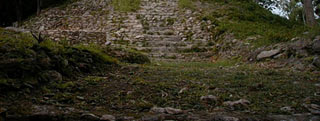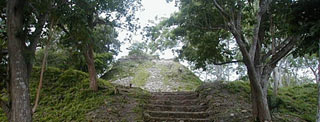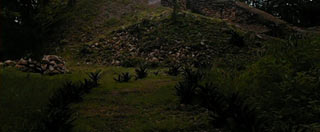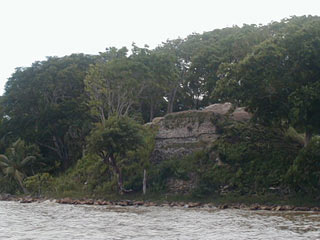With
this understood, my fishing boat guide headed out across the southeastern
corner of the Bay of Chetumal. Immediately I could see just off
the bow of the boat the Maya archaeological site of Cerros rising
quickly in the distance. Perched upon a hilltop on the direct
opposite side of the bay from the Podzun’s inn, Cerros is
believed to have been an important coastal trading center in the
Maya Pre-classic Periods between 350B.C. and A.D. 250.
The
Spanish word for ‘hill’ is Cerros, while the literal
English translation for the term is ‘Maya Hill’.
According to the completed studies of David Freidel of the Southern
Methodist University in Dallas, Texas, and an associate Cathy
Crane, that have surveyed and excavated Cerros, a Maya fishing
village existed in Cerros for the first three hundred or so
years of the mentioned period. At the time Cerros encompassed
about seven and a half acres of land along the bay of Chetumal
with a local population of some five to six hundred inhabitants.
The
research of Freidel and Crane point to Cerros being a distribution
point for salt and honey as well as Guatemalan Jade and Obsidian.
From the distribution center at Cerros, the products went north
up the Yucatan as well as down the New River to the formidable
Belize Maya site of Lamanai less than two hours by motorboat
today. From Lamanai it is proposed that the distribution network
was linked to the Belize Maya Mountain cities of Caracol and
Lubaantun as well to as the Guatemala ancient Maya city known
for its magnificent towering temples, Tikal.
The tallest of its temple located at Cerros rises some twenty-one
meters (sixty-three feet) above the main plaza floor.





















